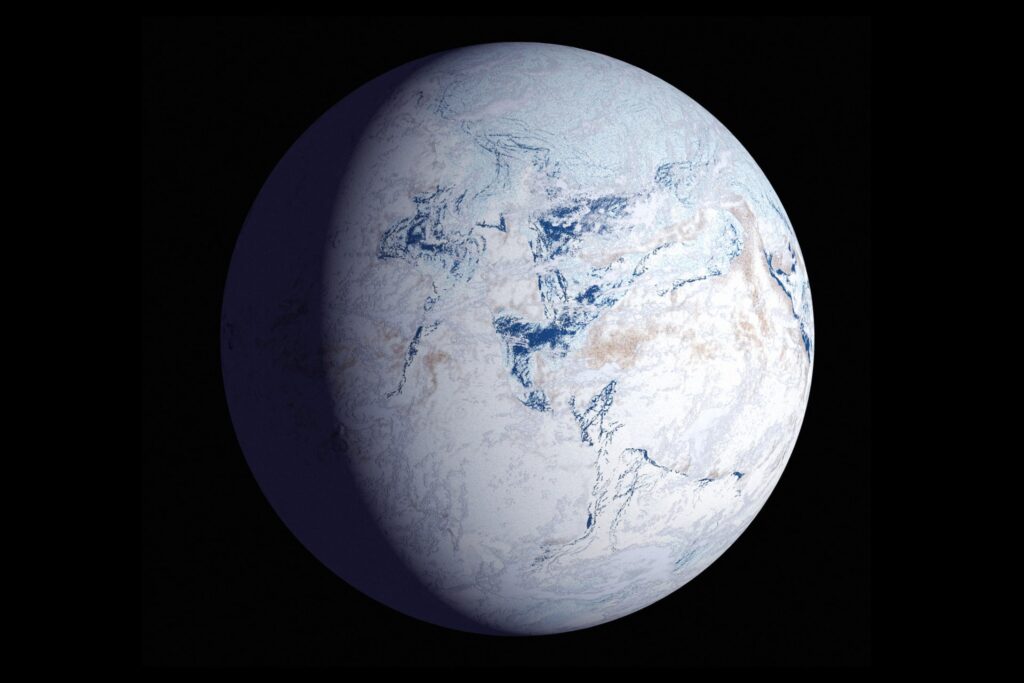About 717 million years ago, Earth changed from a wet world with turbulent seas to a cold and barren world. Scientists have nicknamed this phase of geologic history and similar ones “Snowball Earth.”
Why the planet became almost solid and frozen, and how it stayed that way for 56 million years, has long been a mystery. Now a team of researchers believe that they have solved this mystery. They say that the freezing of the earth may be caused by the global reduction of carbon dioxide emissions; The incident that happened as a result of less eruption of this gas from volcanoes into the atmosphere.
Reducing carbon dioxide emissions makes it more difficult for the Earth’s atmosphere to absorb heat. The researchers argue that if the decline in carbon dioxide emissions were severe enough, it would push the planet into the longest ice age ever.
The new theory that Journal of Geology published, provides new insight into how geologic processes have affected Earth’s climate in the past. It also helps scientists better understand the current climate processes on Earth.
The glaciation of the Earth may be caused by the global decrease in carbon dioxide emissions
Adriana Dutkiewicza sedimentologist from the University of Sydney who led the study, B New York Times He says: “Of course, these days, humans have a significant impact on the release of carbon dioxide in the atmosphere. “But in the past there were no humans, and so everything was fundamentally modulated by geological processes.”
There are many ideas to explain how the Earth turned into a snowball. One of the popular theories says that minerals released by the weathering of igneous rocks suck carbon dioxide from the atmosphere and create deep freezes in the ground. Dutkiewicz says the global glaciation may have started this way, but this theory alone cannot explain why the Earth was frozen for 56 million years. “So there must be some other mysterious mechanism that preserves the ice for so long,” he adds.
Dutkiewicz et al for publication A new animated model of plate landforms, turned their attention to the study of volcanoes. Next, the researchers studied the changes along the mid-ocean ridge (a chain of underwater volcanic mountains) predicted by the model, as the continents moved away from each other.
The team of researchers calculated the amount of volcanic gas emissions since the beginning of the Ice Age. The results showed that the decrease in carbon dioxide emissions in the atmosphere was enough to start and continue the 56-million-year ice age.
Reduced volcanic emissions have previously been suggested as a factor in the Earth turning into a snowball. But according to Dutkiewicz, researchers have for the first time demonstrated through modeled calculations how this mechanism works.
The model is not supported by actual data, but is the most likely theory
Dietmar MullerThe study was one way to distinguish between alternative models for a very ancient part of Earth’s evolution, says a geophysicist from the University of Sydney and an author of the study. “If scientists know that there was an Ice Age, then we can say that this example of the reconstructed model is more likely than the other models,” he explains.
Of course, the model used in the study is only a reconstructed example and is not supported by real data. For this reason, researchers cannot rule out other possibilities. “There are no definitive answers in geology,” Dutkiewicz says. “But based on a combination of different lines of evidence, we can suggest that this process is very likely.”
Other researchers believe that such studies are important for learning about the causes of climate disturbance, but are hesitant to accept the results of ancient seabed models; Because there are few data on the exact state of the Earth’s oceanic crust at that time, and measuring such models is very challenging.
Still, Müller believes that trying to put limits on past volcanic emissions is important, especially when it comes to running future climate models. “It’s usually the most variable parameter,” he adds.
A new study allows scientists to distinguish the effects of geological activity from human activity when studying the climate, but could natural reductions in volcanic emissions save us from the amount of carbon we’ve emitted into the atmosphere to date?
“Unfortunately, no,” Dutkiewicz replies. “We can study ancient disturbances, but changes caused by human activity are another type of destructive impact.”



